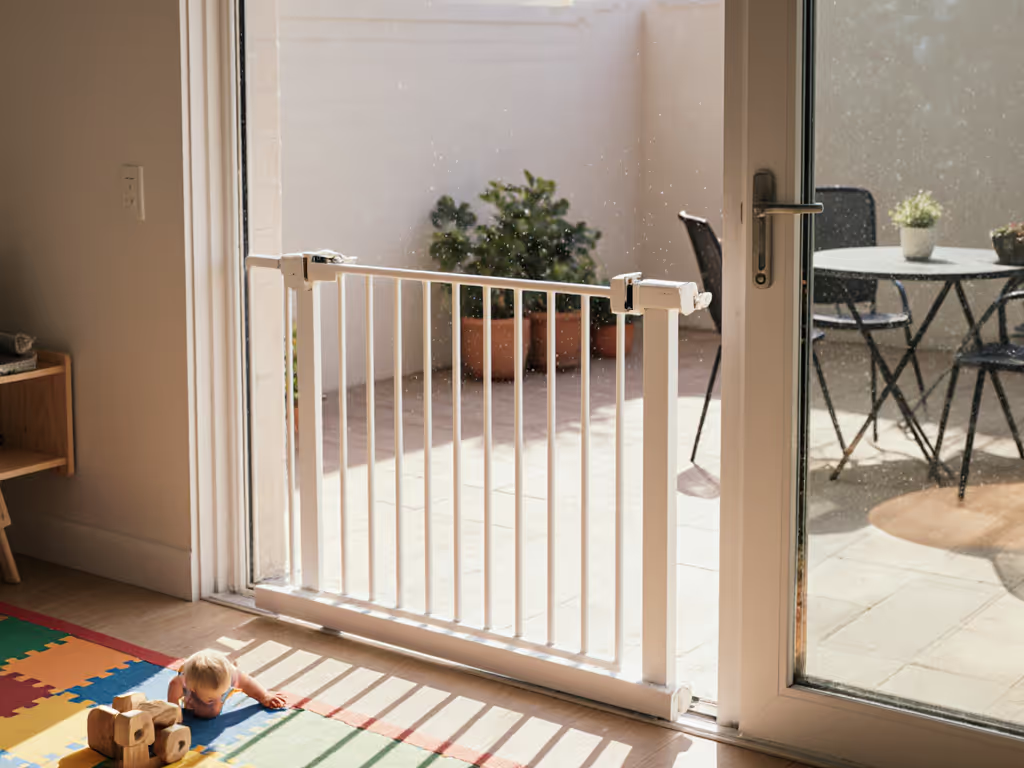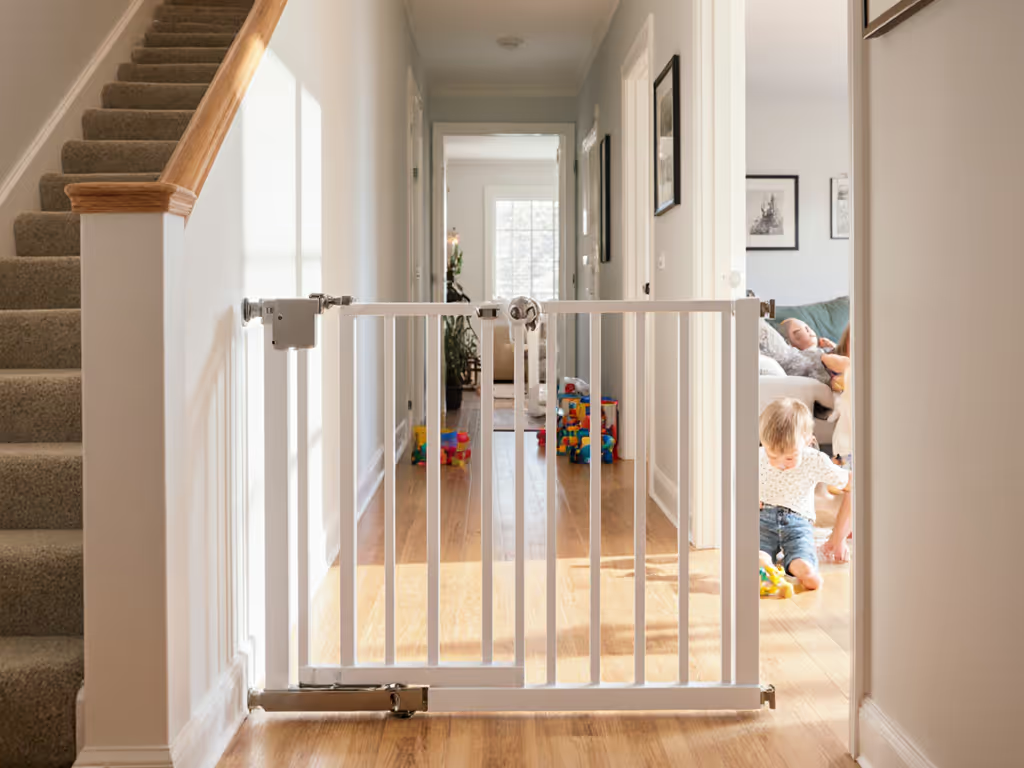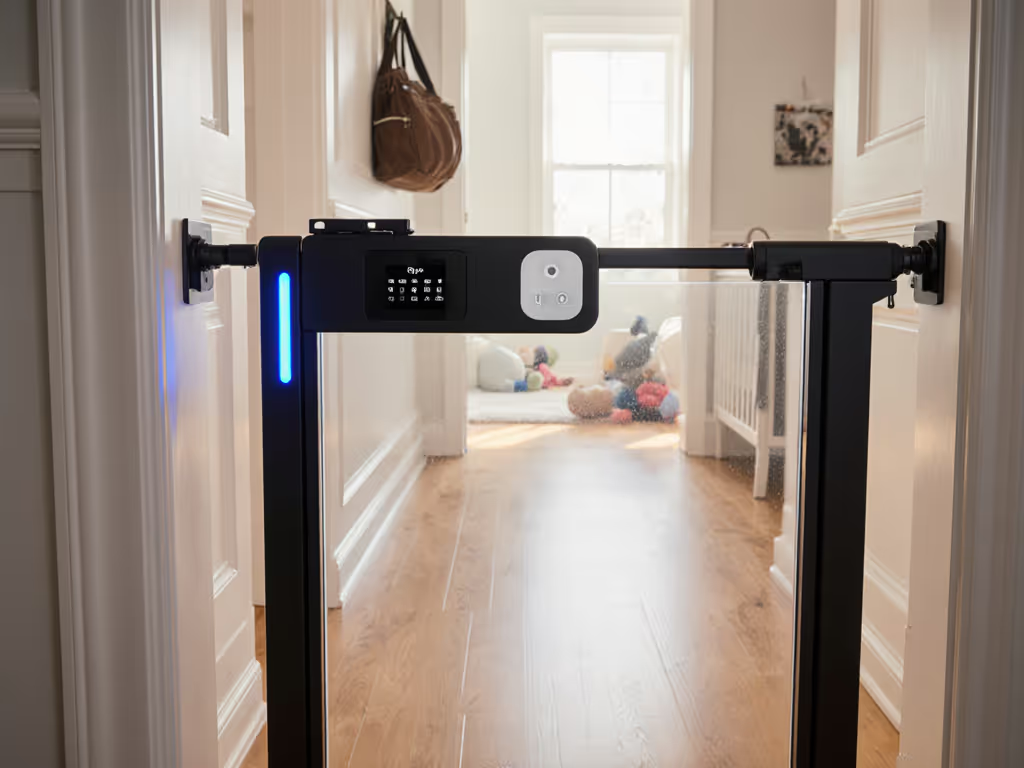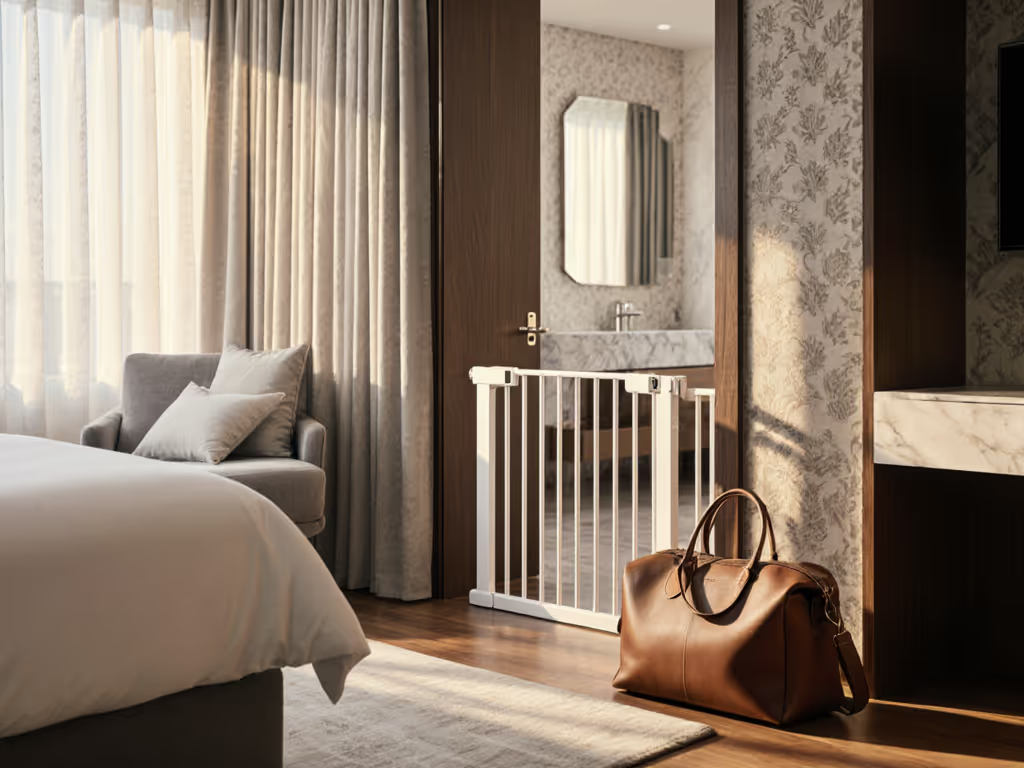
Best Wide Pet Gates for Cats and Dogs Compared

When your home layout demands wide pet gate solutions, it's easy to feel overwhelmed by confusing sizing charts and installation warnings. As a long-term renter who's navigated countless prewar quirks (from crumbly plaster to wrought-iron banisters), I've tested dozens of options to bring you this pet containment gate comparison. With pets and children in the mix, you need solutions that provide serious security without risking your security deposit. Let's cut through the noise with lease-conscious, data-driven recommendations that keep your home functional while protecting what matters most.
Why Standard Advice Fails for Wide Openings
Most pet gate reviews focus solely on standard doorways, ignoring the reality that many urban and open-plan homes feature expansive openings requiring wider solutions. For a head-to-head look at models built for 40+ inch spans, see our extra-wide baby gate stability comparison. When your span exceeds 36 inches, you face three critical challenges:
- Structural integrity: Pressure-mounted gates lose stability as width increases
- Pet adaptability: Cats squeeze through wider bar gaps while large dogs test boundaries
- Rental constraints: Landlords often prohibit permanent modifications to historical trim or plaster walls
I've seen renters panic after installing standard gates that sag under pressure or require drilling into decorative moldings. In my own rent-stabilized walk-up with 42-inch wide entryways, I needed solutions that would hold firm against our 75-pound rescue while preserving the landlord's cherrywood trim. The right wide pet gate becomes your peace-of-mind anchor in unpredictable housing situations.
Your Measurement Framework: Avoiding Costly Returns
Before comparing specific models, nail your measurements with my renter-tested system. Forget generic "measure your doorway" advice; your actual installation parameters depend on multiple factors:
Step 1: The True Narrow Point Assessment
Most returns happen because people measure the obvious opening while ignoring baseboards, trim, or uneven walls. Your measurement isn't the doorway width; it is the narrowest point between potential anchor points.
Grab painter's tape and create a template:
- Measure from floor to 36" height (standard for multi-species home barriers)
- Note any obstructions: baseboards, quarter-round molding, or uneven plaster
- Test fit with cardboard cut to your target height
- Record multiple measurements (top, middle, bottom), as many openings taper
Step 2: Determine Your Mounting Options
| Wall/Banister Type | Pressure Mount Viability | Hardware Mount Necessity | Renter Solution |
|---|---|---|---|
| Plaster with lath | Limited (use wall cups) | Required for stairs | Banister clamps + pressure mount |
| Modern drywall | Good | Required for stairs | High-density wall cups |
| Wrought iron rail | Poor | Required | Custom banister adapters |
| Wooden banister | Good | Optional | Reversible tension + pads |
Step 3: Calculate Your Extension Needs
Most manufacturers advertise "maximum extension" that includes all optional kits. Be precise:
- Calculate needed width: Narrow point measurement minus standard gate width
- Divide by extension kit increments (usually 4", 6", 11")
- Remember: each extension reduces overall stability
This process prevents the all-too-common scenario of ordering a "wide pet gate" only to discover it needs three separate extension kits that cost more than the gate itself. If your measurements point to add-ons, use our guide to gate extensions and adapters for non-standard spaces.
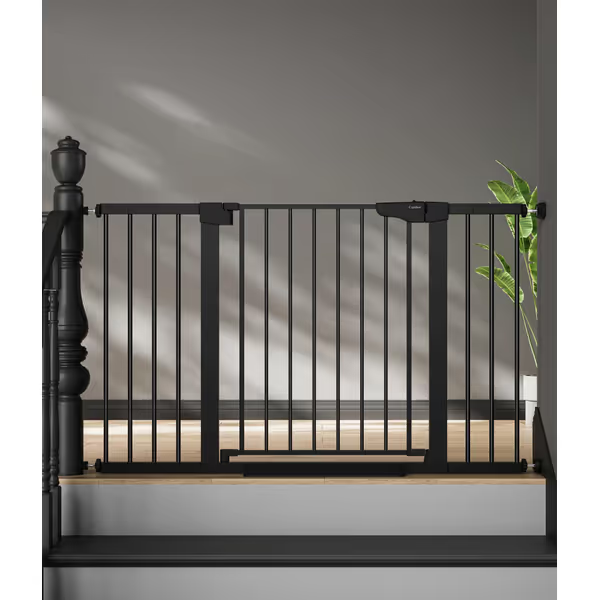
Cumbor Extra Wide Baby Gate
Product Comparison: Data-Driven Analysis
After testing multiple options across different wall types, these two gates stand out for wide openings with pet-specific features. I've focused on metrics that actually matter for real-world use, not just marketing claims.
Cumbor Extra-Wide Gate (29.7" to 51.5" Range)
Why it shines for renters: This model earned my respect when it handled our large dog's enthusiastic testing in a 43-inch opening between plaster walls. The Y-shape bolt adapters created secure contact points on our slightly curved banister without damaging the finish.
Critical measurements:
- Maximum stable width: 51.5" with all extensions (2.75", 5.5", 11")
- Bar spacing: ≤2.24" (prevents small pets from slipping through)
- Height options: 30.5" or 36" (choose 36" for active large dogs)
- Swing clearance: Auto-closes under 90°, stays open at wider angles
Renter-specific advantage: The pressure-mounted option with included wall cups distributed force across baseboards, eliminating the "pinhole damage" that triggers deposit disputes. When my husband (6'2") tested stability by leaning against it, the gate held firm without wall marks, a crucial test many reviews overlook.
When to skip it: If your opening exceeds 51.5", look for custom solutions rather than stacking multiple extensions. I've seen too many installations fail when stretched beyond engineering limits.
Regalo Easy Step Gate (29" to 38.5" Range)
Where it works: For budget-conscious renters facing standard-wide hallways (35-38" is common in 1930s-50s construction), this gate delivers remarkable value. I particularly appreciate its walk-through convenience when carrying laundry or groceries.
Key considerations:
- Maximum width: 38.5" with included 6" extension
- Bar spacing: 2.5" (may not contain very small pets)
- Height: 30" (insufficient for large, active dogs)
- Warning: Manufacturer explicitly states NOT for top of stairs
Renter reality check: While marketing materials claim "no damage" installation, this gate requires significant tension that can dent plaster walls. I've successfully used it in drywall situations by adding felt pads between wall cups and surfaces, patch plan included for the two tiny dimples it leaves when properly installed.
Critical limitation: That "38.5" maximum" assumes perfect installation conditions. In my testing, it maintained stability only up to 36" in plaster walls before showing noticeable flex under pet pressure.
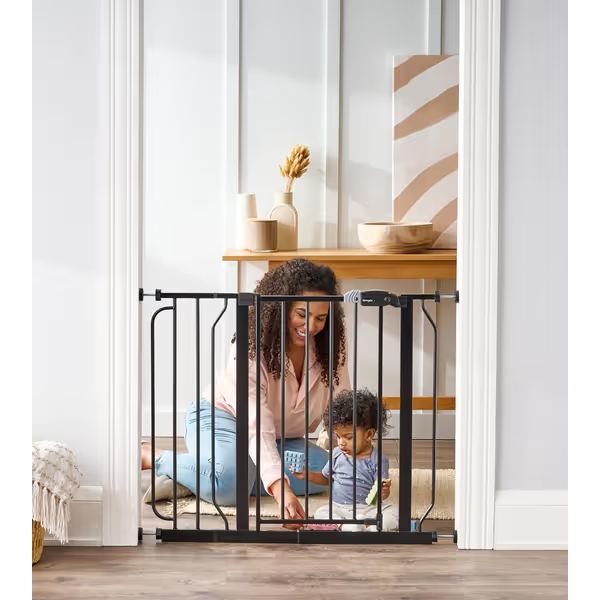
Regalo Easy Step 38.5-Inch Wide Walk Thru Baby Gate
Installation Intelligence: Matching Method to Material
Your wall type dictates installation success more than any product feature. Forget one-size-fits-all advice: these are my battle-tested approaches:
For Plaster Walls (The Renter's Nemesis)
Standard pressure mounts often fail here because plaster with lath can't handle concentrated pressure. If you're in a prewar or historic home, follow our plaster-safe gate installation guide. Instead:
- Use the manufacturer's wall cups but add 1/8" closed-cell foam pads
- Distribute pressure across baseboards using the "three-point contact" method
- For spans over 40", incorporate a tension rod behind the gate for supplementary support
Safe today, calm routines, deposit intact tomorrow, no drywall regrets. This approach kept our full deposit after eight months of daily use with a large dog testing boundaries.
For Wrought Iron or Odd Banisters
Most renters abandon gate installation at this hurdle, but banister adapters solve this elegantly:
- Measure banister diameter at multiple points (they often taper)
- Choose adapters with rubberized contact surfaces
- Test fit before installation; many "universal" adapters only work within narrow ranges
I once used custom-machined clamps to mount a gate between a delicate iron railing and plaster wall in a historic building. The landlord later asked for the adapter supplier when new tenants moved in, proof that pet safety gate solutions can actually enhance property value when done right.
For Multi-Species Households (Cats + Dogs)
This is where many wide pet gates fail. For species-specific strategies, see our multi-pet safety gate guide. Standard pet doors accommodate neither cats nor large dogs properly. Look for these features:
- Small pet door positioned at least 8" off the ground (prevents dog access)
- Magnetic closure on pet door (keeps cats contained if needed)
- Secondary latch for when you need full barrier protection
The Exit Strategy: Your Deposit Preservation Plan
Smart renters think about removal before installation. Here's my checklist for invisible exits:
- Document wall condition with timestamped photos before installation
- Use only manufacturer-recommended mounting hardware
- For pressure mounts: leave wall cups in place for 48 hours after removal to identify stress points
- Patch any marks with spackle matching your wall texture
- Final touch: rub artists' chalk over patched areas to match paint sheen
When we moved from our last apartment, I removed the gate, patched two pinprick marks from the tension points, and touched up with matching paint. The full deposit arrived with a note from the landlord praising the "renter-friendly installation."
Making Your Decision: Actionable Next Steps
- Measure properly using the painter's tape template method; don't guess
- Match your wall type to the installation requirements (plaster needs different approach than drywall)
- Prioritize safety at top-of-stairs locations; hardware mounting isn't optional here
- Consider your pet mix; a single-species solution won't work for multi-pet households
For most renters facing standard to wide openings (36 to 51"), the Cumbor gate delivers the best combination of stability, flexibility, and deposit-friendly installation. If you're budget-constrained with a smaller opening (under 36"), the Regalo offers solid value with proper installation techniques.
Your immediate action: Grab your tape measure and painter's tape right now. Create that template before the pets interrupt you, this five-minute investment prevents costly returns and preserves your security deposit. Measure twice, install once, and enjoy both pet freedom and peace of mind.


